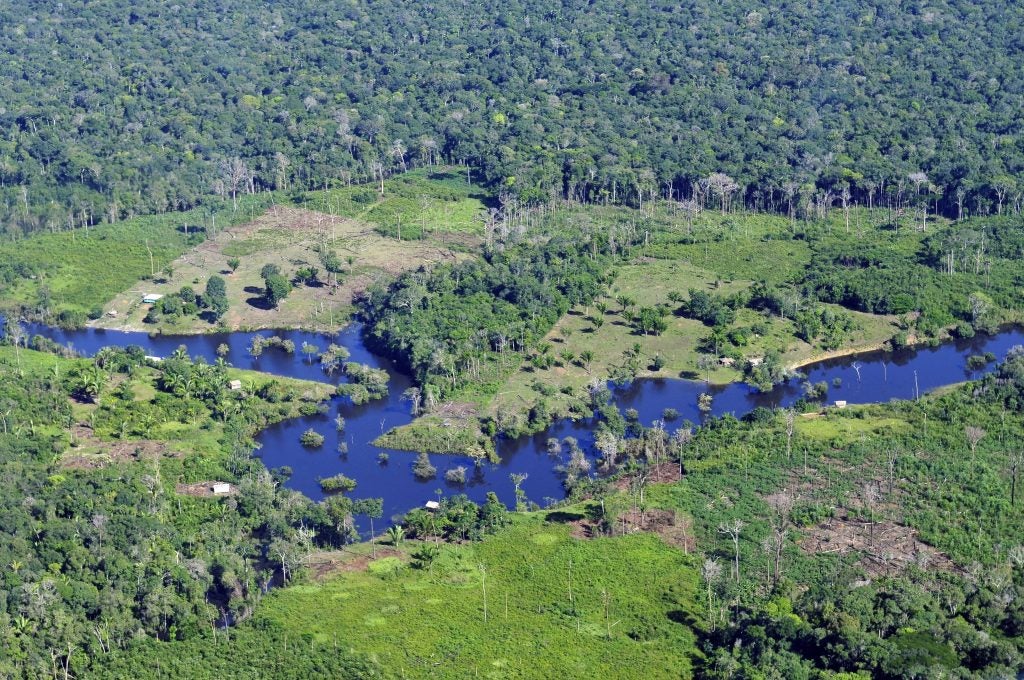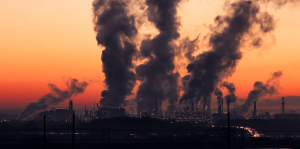Scientists agree that to maximize our chances of averting the worst impacts of climate change, we must stop adding climate pollution to the atmosphere by soon after mid-century. As one of the world’s most advanced economies, the U.S. must reach that goal no later than 2050 – which means transitioning to a 100% clean economy. If this sounds like an ambitious goal, that’s because it is. But it is also what’s needed to protect our economy, our health and our kids’ future.
Why a 100% Clean Economy?
For decades, scientists have warned that catastrophic climate change will result from continued unchecked greenhouse gas emissions. And for decades, our emissions have continued to grow.
Last fall, a Special Report from the Intergovernmental Panel on Climate Change (IPCC), the United Nations body made up of leading scientists from around the world and responsible for assessing the science related to climate change, found that to meet the goals of the Paris Agreement, it will be necessary for the world to achieve net-zero carbon dioxide emissions (adding no more pollution to the atmosphere than we can remove) by soon after midcentury. We also need to achieve deep reductions in other greenhouse gas pollutants like methane. Continued delay will only deepen the challenge, and require us to reduce our emissions even more rapidly.
We’re already seeing the impacts of climate change in communities across the country from record flooding, devastating wildfires, scorching heat waves, and bigger and more damaging storms. Although the impacts are local, climate change is a global problem – which is why the IPCC outlined a global goal. But there are several reasons why the U.S. should strive for achieving a 100% clean economy as soon as possible.
First, the U.S. is the second largest emitter in the world, behind only China. Reaching net-zero emissions globally will only be possible with U.S. leadership. Second, over our history, the U.S. is responsible for by far the most emissions of any other country, more than 85% above China, the second biggest emitter. (Check out this Carbon Brief animation to see the relative emissions contributions of top emitting countries since 1750.) The U.S. has played a major role in creating this problem – we must also play a major role in the solution.
Furthermore, tackling the climate challenge is also just good business. By transitioning as rapidly as we can to 100% clean energy across our economy – including the power sector as well as transportation and industry – we will unleash the power of American innovation to develop cheaper, more efficient clean energy technologies. As global momentum on climate action continues to build, clean energy manufacturing will be an increasingly important industry. Innovative solutions developed by American entrepreneurs can be deployed around the world, helping lower the costs of global emissions reductions while strengthening American industries.
What Exactly Does 100% Clean Mean?
As we substitute zero carbon energy sources like wind and solar for fossil fuels like coal and natural gas, we reduce emissions. We’ve made a lot of progress on this front: according to the National Renewable Energy Laboratory, from 2007-2017, renewable electricity generation more than doubled, and wind and solar generation went from less than 1% of our electricity mix to more than 8%. But we can – and must – do a lot more.
Other sectors of the economy, however, such as air travel, or steel, cement and chemicals manufacturing, are very likely to be difficult and expensive to decarbonize with the technologies we have available or are developing today.
That’s where carbon dioxide removal technologies (CDRs) can play an important role. In comparison to technologies like solar or wind, which generate carbon-free energy, CDRs actually remove carbon dioxide from the atmosphere. As long as we remove as much carbon from the atmosphere as we put into it, we’ll have achieved net-zero emissions – or a 100% clean energy economy.
There are many different types of CDRs, from natural approaches like increasing the amount of forest land and adopting sustainable farming practices, to technologies like direct air capture (DAC) that can suck pollution directly out of the air and store it underground or reuse it in products like fuel, fertilizer, or concrete.
How Do We Do It?
That’s a good question. We know that we are going to need to rapidly shift to cleaner sources of generation in the electricity sector, expand the use of clean electricity in sectors across the economy, advance energy efficiency – and also remove carbon from the atmosphere. The strategies we’ll need to pursue will vary by sector, and given the rapid pace of technology development over the last several years, it’s hard to know which zero-carbon technologies will end up being the most cost-competitive and easy to scale by 2050.
That’s why it’s important that the 100% clean economy goal is focused squarely on environmental results – cutting the pollution that causes climate change without specifying specific technology solutions. This allows for maximum opportunities to deploy a portfolio of technologies and approaches while providing incentives to innovators to find new effective and efficient low-, no-, and negative-emission technologies.
We can achieve this goal, but it will require policies that set declining limits on greenhouse gas emissions; account for the real cost of that pollution; stimulate the research, development and deployment of innovative technologies; and incentivize rapid action, especially in the sectors of the economy that look most challenging to decarbonize.
Climate change is an urgent problem that demands an urgent solution. The time is now to commit to a 100% clean economy that will be cleaner, safer, and more prosperous for all Americans.











 (This post was co-written by EDF intern Laura Supple)
(This post was co-written by EDF intern Laura Supple)